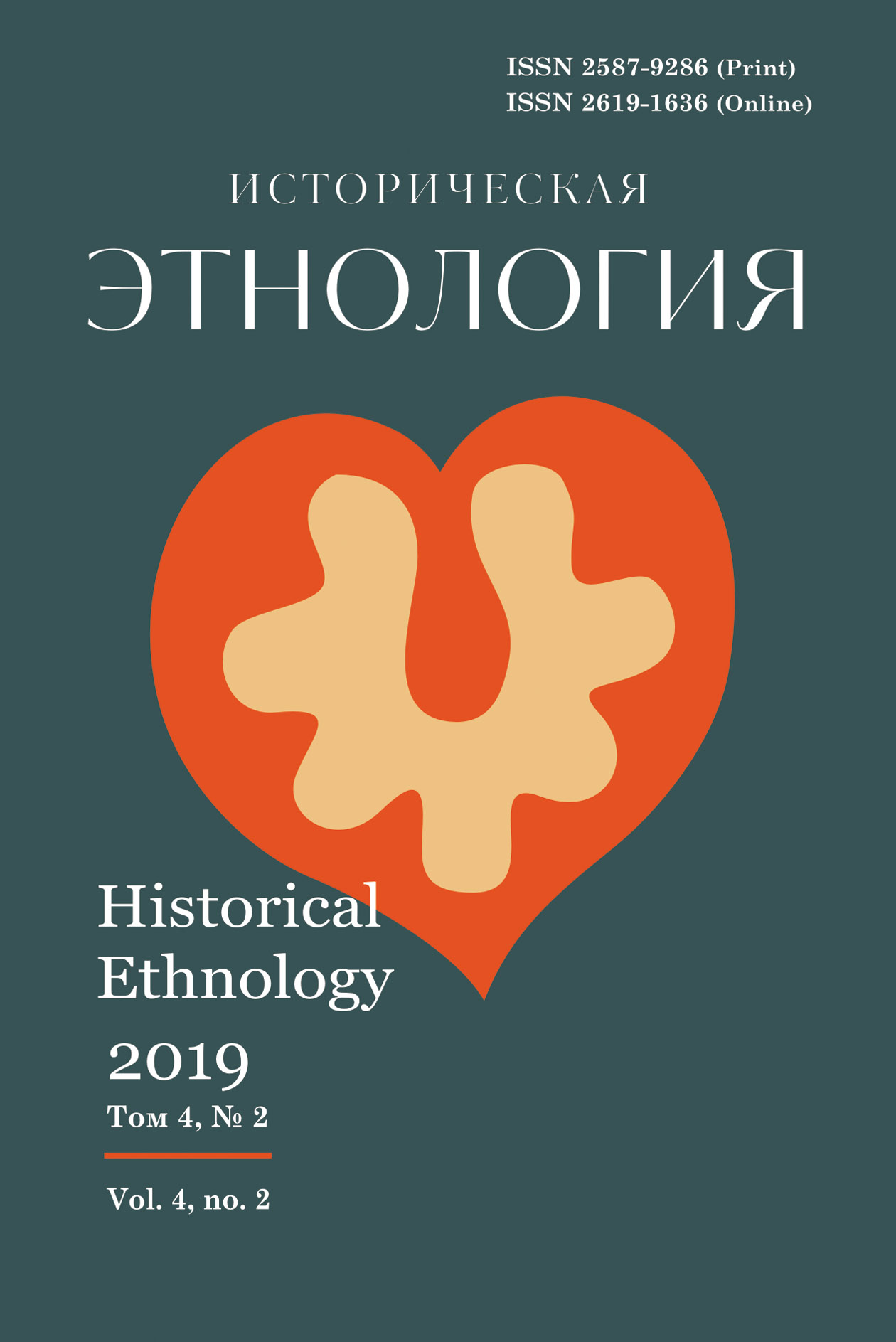Unknown mosques of the Old Tatar Quarter of the second half of the 16th – the first half of the 18th century
Aidarova-Volkova G.N.
219-234 p.
doi.org: 10.22378/he.2019-4-2.219-234
The work focuses on the study of Kazan mosques of the first centuries of the Russian period. The relevance of the topic is due to its insufficient elaboration within the framework of the history and theory of architecture. White spots in the history of the architecture of Tatarstan require searching for new sources and approaches to studying Muslim architecture of the second half of the 16th – the first half of the 18th centuries, the period when construction of mosques was prohibited. Based on the analysis of chronicle, cartographic, archival, historical and architectural sources, it was established that after the “capture of Kazan,” ancient mosques were occasionally preserved or new mosques were built illegally in Kazan and in other settlements of the former Kazan Khanate. To designate newly built mosques, the author introduces the term “illegal mosque” as a type of mosque with a reduced social, functional and aesthetic program, built without the permission of the authorities. In some cases, elected representatives from Tatar residents got permissions to build mosques even before the legalization of Islam in the beginning and in the middle of the 18th century. Certain typological features of illegal mosques of the Old Tatar Quarter have been revealed.
Keywords: architecture of illegal mosques, Tatar quarters of Kazan in the 16th–18th centuries
For citation: Aidarova-Volkova G.N. Unknown mosques of the Old Tatar Quarter of the second half of the 16th – the first half of the 18th century. Istoricheskaya etnologiya – Historical Ethnology, 2019, vol. 4, no. 2, pp. 219–234. DOI: 10.22378/he.2019-4-2.219-234
REFERENCES
- Aidarova G.N. Arhitekturnaya kul’tura Srednego Povolzhya XVI–XIX vv.: model’ razvitiya, struktura tipov, vliyaniya [Architectural culture of the Volga Regions of the 16th–19th centuries: Model of development, structure of types, influences]. Kazan, Kazan State Univ. of Arch. and Engin. Publ., 1997. 196 p.
- Aidarova G.N. Tatarskie slobody Kazani: arhitekturno-gradostroitel’noe razvitie i metodologicheskie aspekty rekonstruktsii [Tatar quarters in Kazan: Architectural and urban development and methodological aspects of reconstruction]. Kazan, Kazan State Univ. of Arch. and Engin. Publ., 1999. 92 p. (In Russian)
- Alishev S. Kh. Istochniki po istorii Tatarstana [Sources on the history of Tatarstan]. Kazan, B. G. Publ., 1994. 124 p. (In Russian)
- Arkhiv Akademii Nauk Respubliki Tatarstan [The Archive of the Academy of Sciences of the Republic of Tatarstan]. Fond 8. Reg. 1. File 352. (In Russian)
- Bol’shakov O.G. Istoriya halifata: T. 1. [The history of the Caliphate: Vol. 1.]. Moscow, Vostochnaya Literatura Publ., 1989. 309 p. (In Russian)
- Valeev F.Kh., Valeeva-Suleimanova G.F. Drevnee iskusstvo Tatarstana [Ancient art of Tatarstan]. Kazan, Tatar Book Publ. House, 2002. 104 p.
- Georgi M.I. Opisanie vseh zhivushhih v rossijskom gosudarstve narodov i ih zhitejskih obrjadov, obyknovenij, odezhd, zhilishch, uprazhnenij, zabav, veroispovedanij i drugih dostoprimechatel’nostej: Chast’ II. [Description of all the peoples that live in the Russian state and their everyday rituals, habits, clothes, homes, exercises, entertainment, religions and other points of interest: Part II]. Petersburg, B. g. Publ,, 1799. 246 p.
- Egerev V.V. Samobytnoe rasselenie narodnostej kazanskogo kraya [The original settlement of the peoples of the Kazan region]. Vestnik Nauchnogo obshchestva Tatarovedeniya – Bulletin of the Scientific Society of Tatar Studies. Kazan, 1928, no 8, pp. 69–70.
- Istoriko-arheologicheskie ocherki Ccrkvej goroda Kazani. Vyp. I [Historical and archaeological essays on Kazan churches. Issue I]. Kazan: Central Printing House, 1913. 45 p.
- Malov E.A. Drevnie gramoty i raznye dokumenty (materialy dlya istorii Kazanskoj eparhii), sobrannye protoiereem E. Malovym [Ancient letters and various documents (materials for the history of the Kazan Diocese), collected by Archpriest E. Malov]. Kazan, Tipo-lithography of Kazan Imperial University, 1902. 54 p.
- Malov E.A. O tatarskih mechetyah v Rossii [About Tatar mosques in Russia]. Kazan, Printing house of Kazan University, 1868. 80
- Malov E.A. Ocherk religioznogo sostoyaniya kreshchenyh tatar, podvergshihsja vlijaniju magometanstva [Essay on the religious status of baptized Tatars who were influenced by Mohammedanism]. Kazan, Printing House of Kazan University, 1872. 154 p.
- Nasyri K. Izbrannye proizvedeniya [Selected works]. Kazan, Tatar Book Publ. House, 1977. 254 p.
- Nevostruev K.I. Spisok s piscovyh knig po g. Kazani s uezdom: (1566–1568) / Izdan Sovetom Kazanskoj duhovnoj akademii k IV Arheologicheskomu s’ezdu v Kazani [List of scribble books in Kazan with the county: (1566–1568) / Published by the Council of the Kazan Theological Academy for the 4th Archeological Congress in Kazan]. Kazan, Tipography of Kazan Imperial University, 1877. 88 p.
- Olearius A. Opisanie puteshestviya v Moskoviyu i cherez Moskoviyu v Persiyu i obratno [Description of the trip to Muscovy and through Muscova to Persia and back]. Petersburg, A.S. Suvorin Publ., 1906. 582 p.
- Piscovaya kniga Kazanskogo uezda 1602–1603 godov [The cadastres of Kazan County for the years of 1602–1603]. Kazan, Printing House of Kazan University, 1978. 240 p.
- Pokrovskij I.M. Okrainy goroda Kazani v XVI–XVIII vekah (Zabulackaja Arhangel’skaja, Jagodnaja slobody) [The outskirts of the city of Kazan in the 16th–18th centuries (Zabulatskaya, Arkhangelskaya, Jagodnaja quarters)]. Kazan, Tipo-lithography of Kazan Imperial University, 1905. 22 p.
- Central’nyj gosudarstvennyj arhiv drevnih aktov [The Central State Archive of Ancient Acts]. Fond 248. Reg. 14. File 803. (In Russian)
- Central’nyj gosudarstvennyj arhiv drevnih aktov [The Central State Archive of Ancient Acts]. Fond 131. Reg. 1. File 1. (In Russian)
About the author: Galina N. Aidarova-Volkova is a Doctor of Science (Architecture), Head of the Department of Theory and Practice of Architecture, Kazan State University of Architecture and Engineering (1, Zelenaya St., Kazan 420043, Russian Federation); aidagalnik@mail.ru
|
|








